I recently received a message from a product manager at Autodesk asking about Revit 1.0. That reminded me that Revit release 1.0 was launched in April, 2000. This birthday post is a bit late (it’s October) — but Autodesk’s interest in Revit’s history motivated me to write this history of the product’s launch 20 years ago.
Readers may remember two posts I wrote (as long as eight years ago!) about the early days at Revit: one about the launch party and one to preserve for antiquity the original Revit Technology Corp. launch video. But I have never actually written about the history of the first release itself. In this post, I want to share some screenshots of Revit 1.0 and the original packaging and go-to-market model. The ideas behind the initial market launch were so original back in the day (and so common today) that I wanted to make sure that history knows what we were thinking and how novel it was for the time.
Let’s start with the packaging and go-to-market. One of the issues that the founders (Leonid Raiz and Irwin Jungreis) and the CEO (Dave Lemont) wanted to address was cost. Most architects in the US at that time worked in firms of 10 or less people. That meant that thousands of dollars for a perpetual license plus maintenance per user for AutoCAD was a real burden on them. Revit shipped as a subscription product with a simple monthly per-seat charge you could put on a credit card directly from the product. Interestingly, you could stop and start the subscription, too, though obviously we hoped architects wouldn’t.
To say we were early on this idea is an understatement. Consider the software subscriptions you never think twice about paying for today: Microsoft 365, Apple iCloud, Netflix and more. The software industry as a whole has completely migrated to this packaging model. The engineering team, as creative in product marketing as it was in developing never-before-seen parametric technology for architecture, embedded the subscription model in the product. In 2000, I believe this may have been a first industry-wide. It certainly was for AEC software. This unity of product and distribution was a major selling point to our investors and a major differentiator for Revit Technology. Instead of big revenue surges from product releases, some of which were sure to lack useful updates, we intended to rapidly evolve Revit for the subscription price (which, of course, we did). And we hoped the payoff for the company would be a steady revenue “annuity” from the subscription model. It sounds so banal today. But in 2000 I can’t tell you the number of times industry pundits told us we were insane.
Here are two photos of the first Revit 1.0 CD. It isn’t the proof copy. It’s actually the first CD I pulled from the first pallet of GA product. We ordered CDs in huge quantities for the 2000 AIA show (where we officially launched). And because the product was designed to offer a demo mode, we intended to “drop CDs from the sky” on architects. (Yup, AOL was still a thing and we unashamedly copied their MO.) IOW, the product and its packaging weren’t conceived as an after-the-fact delivery medium for complex AEC software. We hoped the CD was an introduction that would lead architects to try and eventually subscribe to Revit.
Unless you were there, you cannot understand the level of work and review across the company that went into every word, image and even the level of gloss on this packaging. Because, architects. Even the website mimicked this package. It was, for the time, a zenith in integrated product purchasing, online presence and packaging.
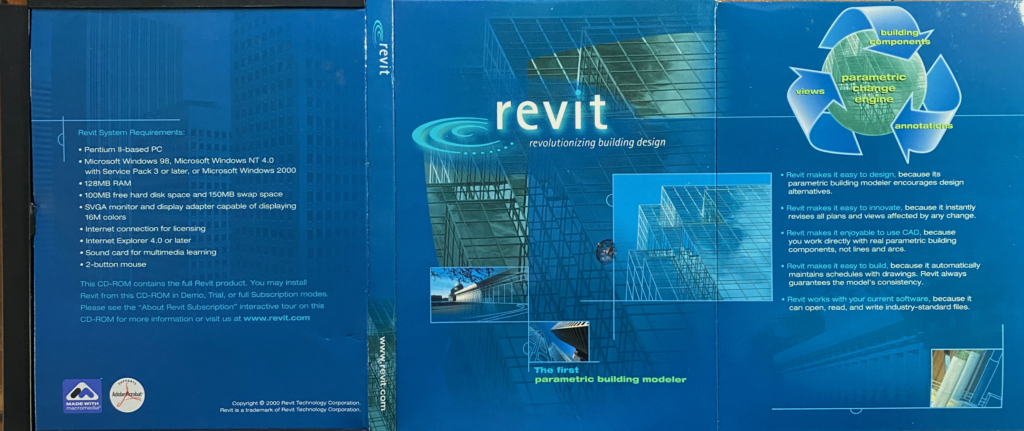
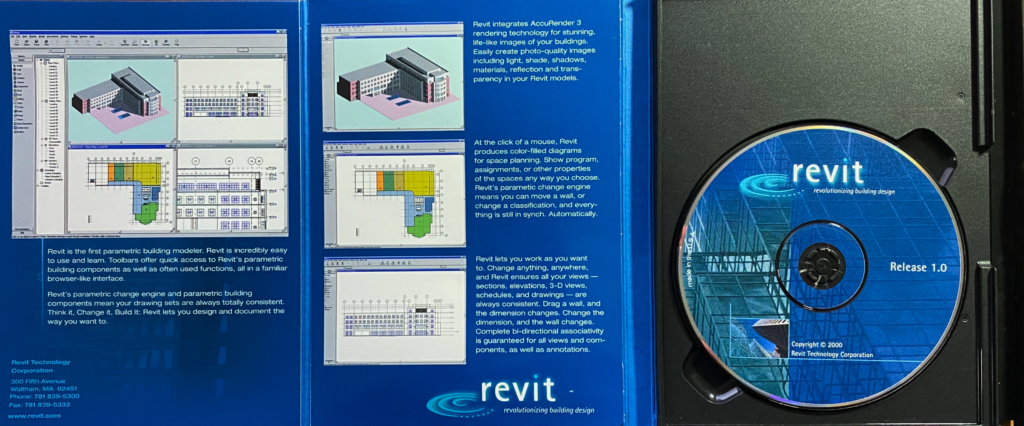
Now, for the code. (Woot!) I created an ISO from the disk you see in the image above and attempted to install it on a virgin VM running Windows 10, version 2004. In what can only be described as a miracle of compatibility on Microsoft’s part, it installs…sort of.
The big problem during installation is, of course, that the licensing servers we were running just aren’t there. (We were on-prem at the time — no Azure or AWS in 2000!) Installation required you to select one of three modes: demo, trial or purchase. For the latter two, we issued a license. Since that is impossible, I finessed my way into demo mode, which is the mode these screenshots are taken from.
As you can see in the screenshot below, the Flash-based (ouch) menuing system my team built for the CD works — even the video plays in the menu app.
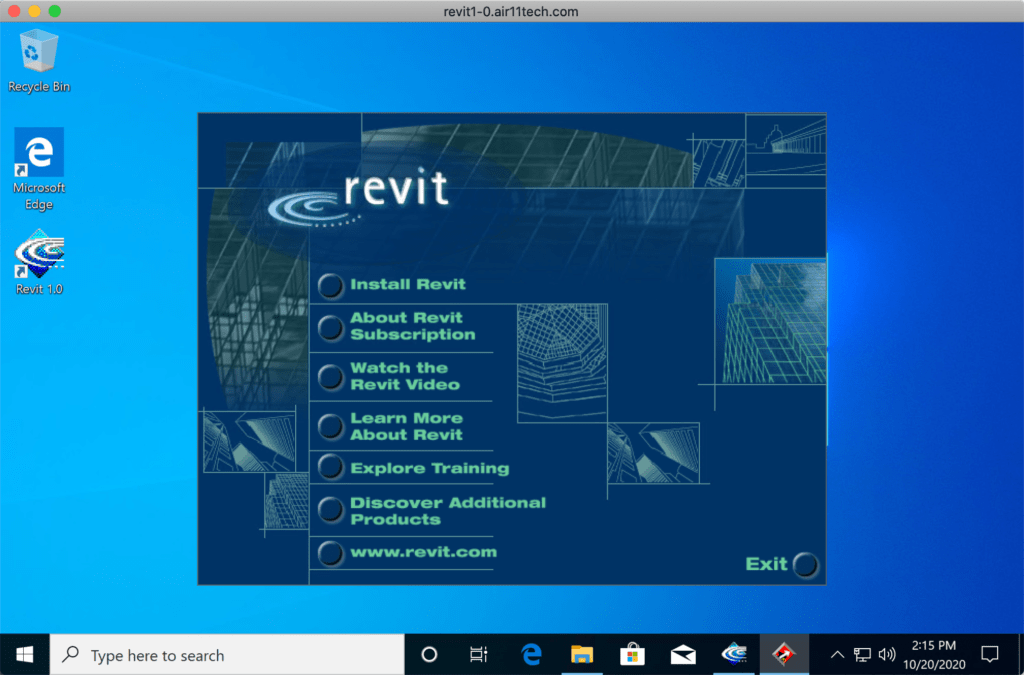
And, here it is: Revit 1.0 running in October, 2020.
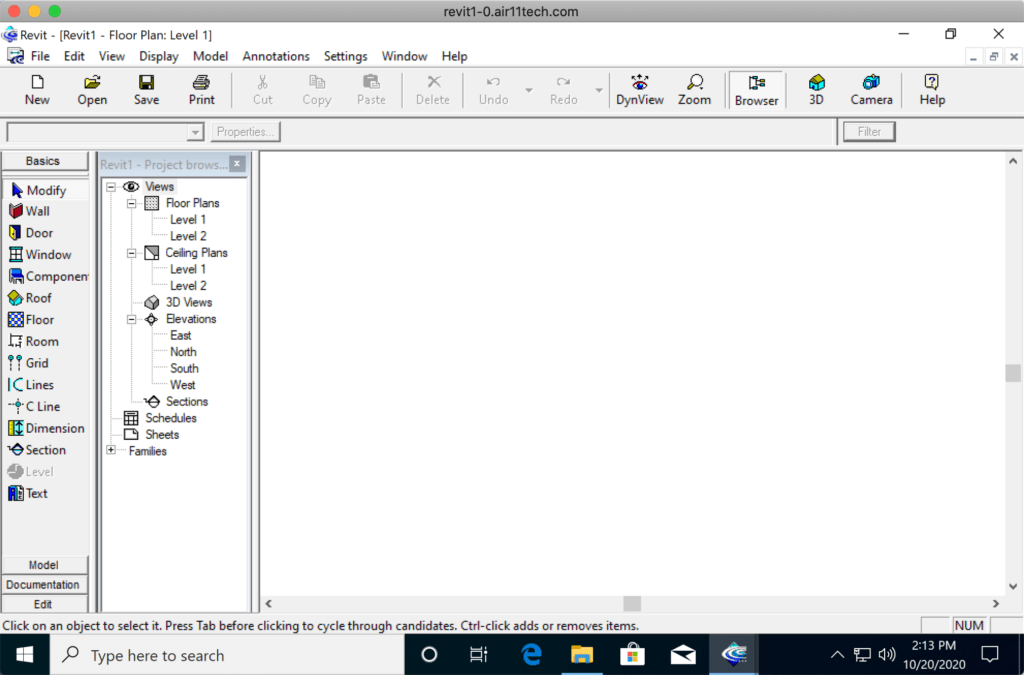
Subscription included support and training — things that were major expenses for AEC users. So, we shipped a comprehensive set of training materials on the CD — still another innovation in Revit 1.0. (Note the date on the training material: April 17 is my birthday.)
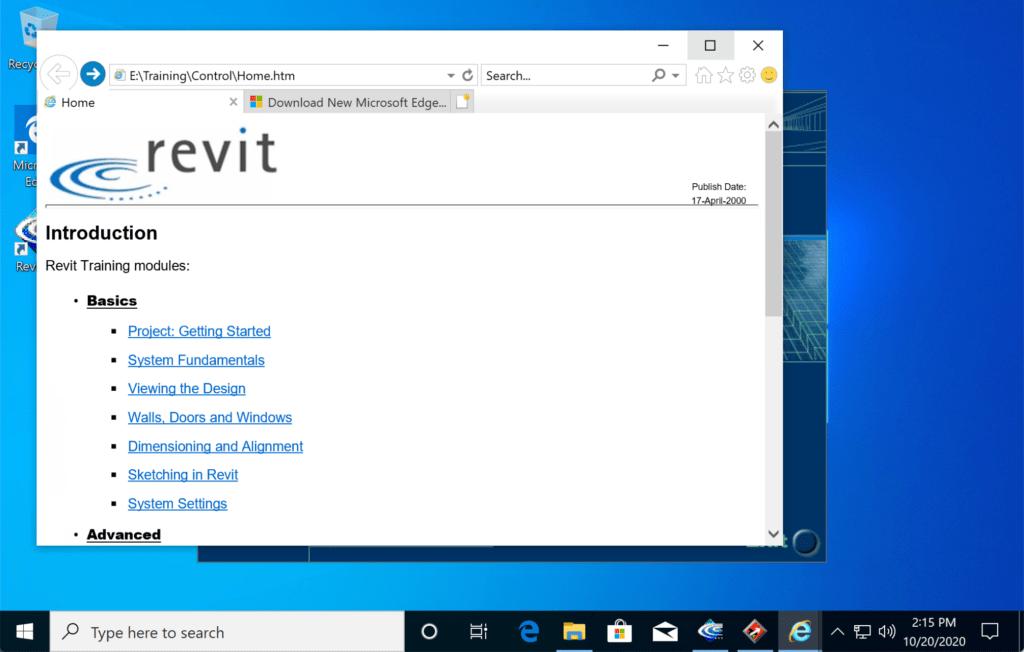
And, finally, proof that 20 years later, Revit 1.0 could open a sample model that was supplied on the CD:
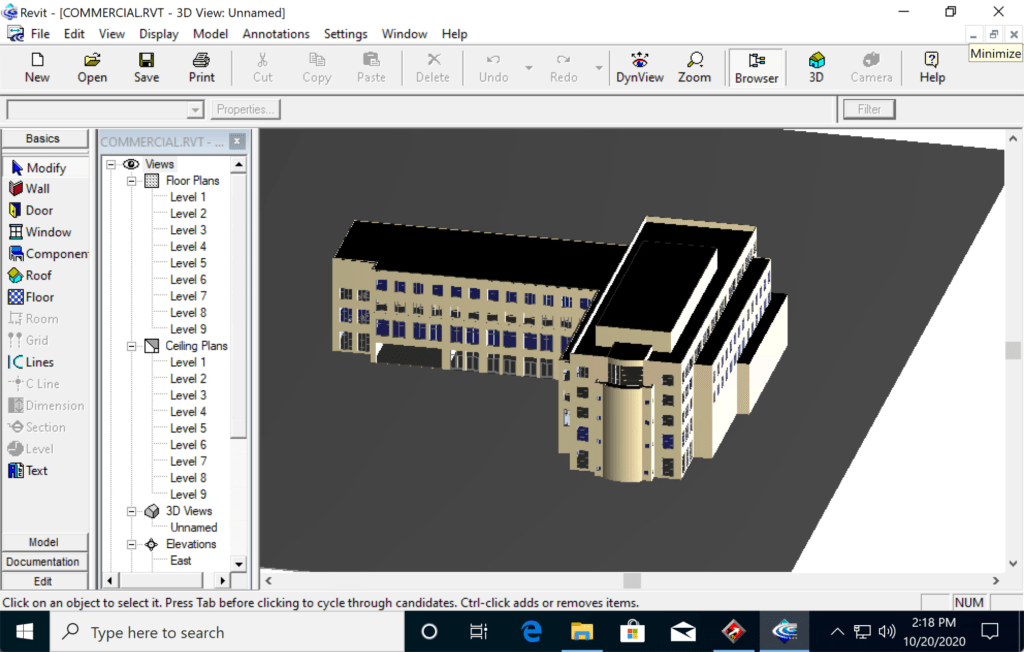
I can still remember the time that one of the product managers showed me this model and to illustrate the power of Revit (then running on Pentium IIs with 1GB RAM) he pulled a wall out in elevation and everything connected back up in plan and other views. It took me (not an architect) a while to understand the import of this. But today, after Revit has changed architecture from 2D to 3D, I look back on that moment as a revelation.
I think the Autodesk product manager wanted a copy of the Revit 1.0 CD to do a then-versus-now comparison. Clearly, I am not the one to do this since I left Autodesk in 2002 (and the original Revit folks would be LMAO on hearing I was doing a demo). Might there be an original Reviteer who might still be in the business and interested in producing a 20th anniversary comparison? Just use the contact form if you’re interested.
Happy (late) birthday, Revit!
Leave a Reply